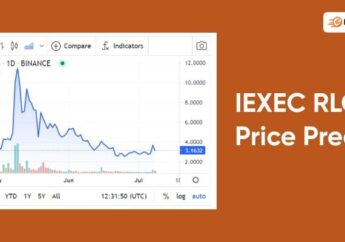Growth vs. Income Investing: Finding Your Investment Style
by Abdul Aziz Mondal Investing 26 February 2024

Do you need help with two investing styles: growth or income? Let’s face it—deciding how to invest your hard-earned money can be overwhelming. On one hand, growth investing offers the potential for substantial returns over the long term, fueled by a company’s stock price growth.
Income investing, on the other hand, provides regular cash flow through dividends, offering stability and security. Both approaches have merits and drawbacks, impacting your financial goals. Find the right investment style for you.
This article will dive into growth and income investing, exploring their differences, benefits, and the factors you must consider when deciding which path to take. By the end of this article, you’ll have a clearer understanding of these investment styles and be equipped to make informed decisions that align with your financial aspirations.
Explain The Differences Between Growth And Income Investing
Growth investing focuses on investing in companies with solid growth potential, often in emerging industries or with innovative products/services. The goal of growth investing is to capitalise on the potential for significant stock price appreciation as these companies continue to grow and expand.
On the other hand, income investing focuses on finding stable, established companies that pay out consistent dividends. These dividends can provide a steady stream of passive income for investors. Income investors typically prioritise companies with solid financials and a history of consistent dividend payments. Find out more at Saxo Bank.
What Are The Benefits Of Growth Investing?
Growth investing offers the potential for higher returns as investors seek to benefit from the company’s future profitability and expansion. This type of investment is generally suited for those with a longer investment horizon and can withstand greater market volatility.
One of the key advantages is that growth stocks can provide substantial capital gains. Companies that reinvest their earnings back into the business rather than paying dividends often see exponential growth, and early investors can reap significant rewards as the company’s value increases. Growth investing can also provide diversification in a portfolio, as these stocks tend to have different risk factors compared to income-generating assets.
Finally, growth investing can also tap into new and emerging industries, allowing investors to be part of exciting developments and potentially benefit from industry growth. However, it is essential to note that higher potential returns come with higher risks, as these companies cannot guarantee success.
What Are The Benefits Of Income Investing?
Income investing offers a compelling proposition for investors seeking stability and a consistent cash flow. Through dividend payments, income investing provides a reliable source of income, which can be particularly advantageous for individuals who are retired or looking for passive income.
One of the critical benefits of income investing is its ability to provide a cushion during market downturns. Unlike growth investing, which is highly influenced by stock price fluctuations, dividend payments tend to be less affected by market volatility. It makes income investing an attractive option for those with a shorter investment timeline and a lower tolerance for market risks.
Moreover, income investing offers a lower risk profile compared to growth investing. By focusing on companies that consistently pay dividends, investors can potentially mitigate the impact of stock market fluctuations and enjoy a more stable investment experience.
Growth Investing And Income Investing Strategies
There are different elements to the growth and income investing strategies. We will look into them here in this section.
Diversification Across Sectors
Diversifying a growth investment across the different sectors can help mitigate the risks and bring down the downturn closely related to the sector. Industries can take advantage of opportunities for growth in different sectors. It assists in minimizing the potential of loss and, after that, the exposure to one single sector.
Long Term Investmetent
The horizon of the growth investment has to be quite expansive. The investors must be ready to keep their investment for an extended period. It enables the business organization to realize its growth potential. Other major strategies for growth investment include portfolio investing and then also using dollar cost averaging.
Other than this, there are also income investment strategies that one can consider.
First, you must consider diversifying with dividend-paying stocks and bonds. You can select from the diverse portfolio of investments like multiple bonds, treasury bonds, municipal bonds, investment grade corporate bonds, and others.
Apart from them, you may have to work on strategies like streamlining the investing using the funds. It is considered a cost-effective way to manage the investment. You can also focus on the overall return rather than the short-term movements in the market. These strategies work with effective investment.
How To Determine Which Investment Style Is Right For You
There are several factors to consider when deciding between growth and income investing. Your investment goals, risk tolerance, and timeline are all crucial elements to assess. Firstly, evaluate your financial goals and what you hope to achieve with your investments. Growth investing may be a better fit if you’re looking for long-term growth potential. However, if generating passive income is your primary objective, then income investing might be the way to go.
Next, consider your risk tolerance. Are you comfortable with higher market volatility and potential losses in pursuit of higher returns? Growth investing may be for you. On the other hand, if you prefer a more conservative approach and value stability, then income investing is worth considering.
Lastly, think about your investment timeline. Growth investing typically requires a longer time horizon, as it may take longer for companies to realise their full potential. Income investing, on the other hand, can provide more immediate returns through regular dividends.
In Conclusion: Choosing Your Investment Style
In conclusion, growth and income investing have unique characteristics and benefits that cater to investors with different goals and risk tolerances. By understanding the critical differences between these investment styles and considering your financial aspirations, you can determine which approach best fits your needs. Whether you choose growth or income investing, always remember to conduct thorough research and seek professional advice before making any investment decisions.
Read Also:



































































































